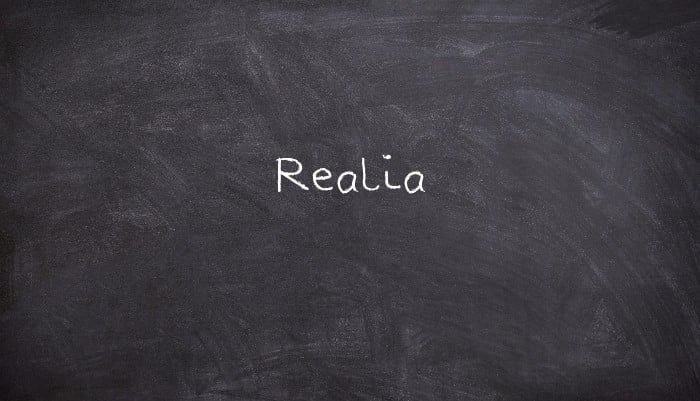What is it? Realia consists of actual objects or items or facsimiles thereof, which are used in the classroom to illustrate and teach vocabulary or to serve as an aid to facilitate language acquisition and production. What does it do? It concretizes vocabulary and language and places it in a frame of reference. It also allows language learners to see, hear, and in some cases touch the objects.
Here are some examples:
- To illustrate and teach young learners vocabulary for animals, clothing, fruit for example, I use actual objects or facsimiles thereof (pieces of clothing, toy animals, plastic fruit). For young learners, it's a very useful tool in making the abstract concrete.
- To introduce my students to Canada, I use a Canadian flag, a map of the world, and photographs of Canada. What realia allows me to do is create a picture of my country, introduce and practice target vocabulary and sentence patterns (I'm from Japan), and serve as a springboard to compare and contrast Canada with Japan (Japan is part of Asia. Canada is part of North America.)
- Realia is useful in teaching prepositions of place (such as on, in, under, next to, in front of, over). Objects can be placed on a desk, in a desk, under a desk and so on.
Realia can be used to create a dialogue. Here's an example that two of my adult EFL students wrote about the Japanese tea ceremony (chado) using the present simple tense and present perfect tense:
A What are you hobbies?
B I study chado.
A How long have you studied chado?
B For two years.
Realia can be used to tell a story. I have used Christmas cards as a means to explain the concept of Christmas and some of its many traditions, to illustrate Christmas images such as Santa Claus, reindeer, candy cane, Christmas trees, poinsettia and to teach Christmas greetings such as "Merry Christmas and a Happy New Year". Christmas cards provided a springboard to get my students to talk about their own holidays and customs.
Using realia in the EFL classroom serves to foster a more creative and active teaching-learning environment and promotes cultural understanding. As I have previously written, there's a connection between language and culture. Helping language learners see the connection helps them understand more clearly the meaning of language.
